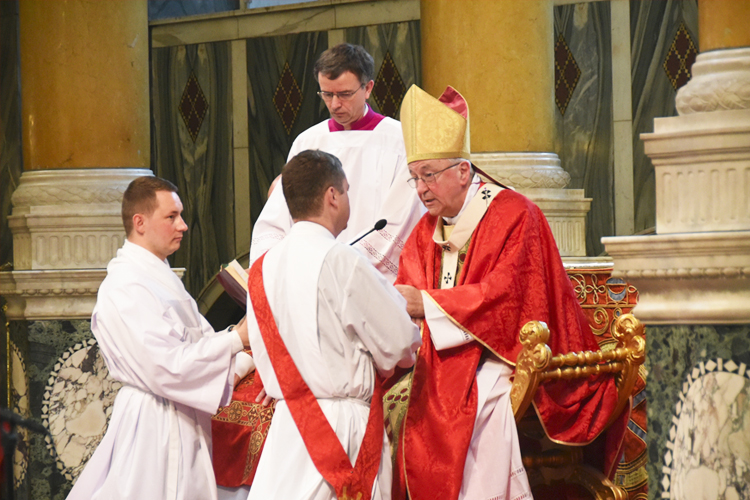
Holy Orders is the sacrament in which a baptised man receives the authority and ability to share in the particular mission that Christ entrusted to his apostles. There are three orders of this sacrament: episcopate, presbyterate and diaconate.
Where do Holy Orders come from?
Holy Orders come from Jesus Christ, who chose twelve men whom he called ‘apostles’. He gave them the commission and power to govern, teach and sanctify (Mt 18:18; Mt 28:19-20; Lk 22:19).
How are Holy Orders passed on?
The apostles conferred Holy Orders on their successors, the bishops. These in turn ordained further bishops, priests and deacons through the laying on of hands and the prayer of consecration according to the rite of the Church.
The three sacramental orders
Bishops are the successors of the apostles and usually govern dioceses. They confer Holy Orders and normally administer Confirmation. United with the Pope, they exercise an infallible teaching authority in the Church. Priests are co-workers of the bishops, particularly in administering parishes where they also teach and sanctify the faithful through the sacraments. Deacons assist the work of the bishop and his priests. Following Christ’s example, a promise of lifelong celibacy is the normal condition for receiving Holy Orders in the West, although a permanent deacon may be married.
The call to Holy Orders
Jesus taught that the call to Holy Orders is his initiative rather than ours, “You did not choose me, but I chose you” (John 15:16). The call is discerned and freely accepted by the man who receives it. The Church tests this call and prepares the candidate for Holy Orders by means of spiritual, human, academic and pastoral formation, usually in a seminary.
This article is originally from ‘CREDO: The Catholic Faith explained’ by CTS.
Video resources